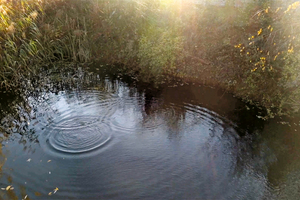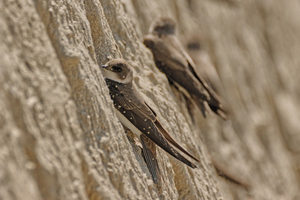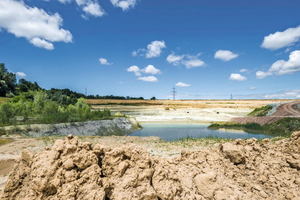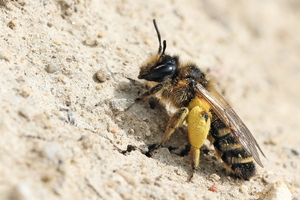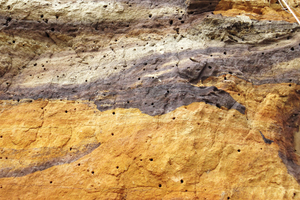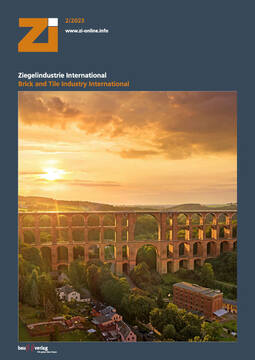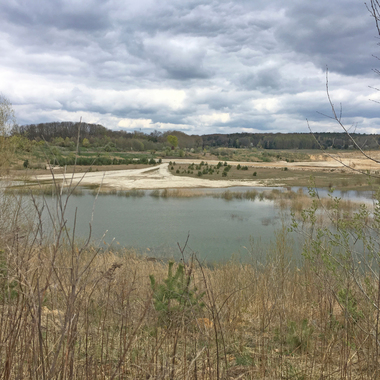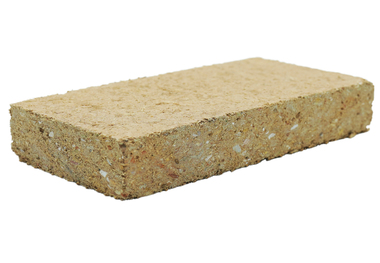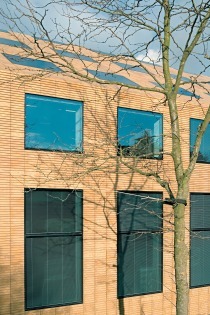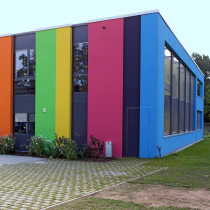Natural wealth from human hands
It’s a common saying: nature recovers if you leave it to its own devices. But it is not always that simple. In an age when humans have already irrevocably intervened in the earth’s biology, geology and atmosphere, nature alone can no longer maintain its biodiversity. In the human-influenced age, the Anthropocene, artificially created areas gain in quality because they meet special needs of endangered species. Clay pits are an example of such habitats.
At the latest since the publication of the “Krefeld Study” in 2017, insect mortality has been a familiar concept. But butterflies and bees are not the only species in decline in Germany. It is also becoming increasingly difficult for natterjack toads, sand lizards or sand martins to find the habitat they prefer. “Straightening of the Iller has meant that there are no longer any steep walls for the sand martin to nest on. And no farmer wants to have a pond in his field where natterjack toads spawn,” says Murray Rattana-Ngam, managing director of the Bellenberg brickworks near Ulm. “These are two animal species that have found a new habitat with us in the clay pit.”
The value of nature
When clay is quarried, steep walls are created that serve not only sand martins but also bees as nesting sites in spring. But even if the animals settle there, nature cannot simply be left to its own devices: “If the steep walls were left to natural erosion by frost and rain, the steep walls would slowly become flatter and cones would form on the ground. This way, martens and other predators can get to the burrows and the colonies do not return,” explains Anton Hörl from Hörl+Hartmann. For him, it is a matter of course to go to great lengths every year to restore the steep walls: “If one were to look purely at the economic costs, one would have to say: this is lost farmland and a wasted investment. But if you have a different attitude and enjoy nature, then this enjoyment is worth much more than a few euros. As a company, we also have an ecological responsibility and we want to live up to it.”
This is how most brick manufacturers feel: “Of course, you have to say that we take something from nature, from the soil. But we also give something back,” Rattana-Ngam describes it. For this reason, he doesn’t simply leave parts of his clay pit to itself, even if that would be more convenient and cost-effective: “More natural is not always in the interests of species conservation.” In addition to the landscaping measures, there is an annual inspection of the quarrying area by BUND, which records the species population.
Creating starting pools
Louisa Ratzke, a geologist at Schlagmann Poroton, also helps nature out here and there, so that it can once again occupy a space and unfold its diversity. “A big problem for many species is that their food source is no longer available. The caterpillars of the evening primrose hawkmoth are tied to special food plants - such as willowherbs,” says Ratzke. So where there are no willowherbs, there can be no evening primrose hawkmoth. Compensatory areas are therefore being created at the Ansbach site, where flowering plants such as the willowherb are being reintroduced. “Once a starting pool has been created, the plants will also spread by themselves in suitable locations.” However, Rattana-Ngam also points out that nothing can be forced: “That is nature. We didn’t bring toads into our ponds either, they settled there naturally. What we can do is create certain conditions, observe and protect and increase existing populations.”
Interventions in the earth cannot be avoided and certainly not the interventions of the last centuries or even millennia can be reversed. Today, however, there are ways to give back to nature at least as much as you take from it. Those who pursue “leaving nature to its own devices” as the sole principle of species protection are actually lowering biodiversity in case of doubt. In order to preserve animal species, tailor-made habitats have to be created - and in some cases maintained in the long term. In places like clay pits, this can be ideally implemented with a combination of building law requirements and ecological commitment out of self-interest.

